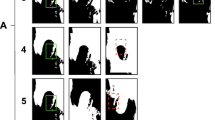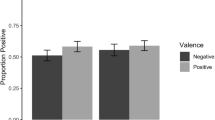Abstract
Déjà vu is characterized by the recognition of a situation concurrent with the awareness that this recognition is inappropriate. Although forms of déjà vu resolve in favor of the inappropriate recognition and therefore have behavioral consequences, typical déjà vu experiences resolve in favor of the awareness that the sensation of recognition is inappropriate. The resultant lack of behavioral modification associated with typical déjà vu means that clinicians and experimenters rely heavily on self-report when observing the experience. In this review, we focus on recent déjà vu research. We consider issues facing neuropsychological, neuroscientific, and cognitive experimental frameworks attempting to explore and experimentally generate the experience. In doing this, we suggest the need for more experimentation and a more cautious interpretation of research findings, particularly as many techniques being used to explore déjà vu are in the early stages of development.
Similar content being viewed by others
References
Papers of particular interest, published recently, have been highlighted as: • Of importance, •• Of major importance
Brown AS: A review of the déjà vu experience. Psychol Bull 2003, 129:394–413.
Brown AS: The Déjà Vu Experience. Hove, NY: Psychology Press; 2004.
Arnaud FL: Un cas d'illusion du 'déjà vu' ou de 'fausse mémoire' [in French]. Annales Médico-Psychologiques 1896, 3:455–471.
Penfield W: The twenty-ninth Maudsley lecture: the role of the temporal cortex in certain psychical phenomena. J Ment Sci 1955, 101:451–465.
Bancaud J, Brunet-Bourgin F, Chauvel P, Halgren E: Anatomical origin of déjà vu and vivid “memories” in human temporal lobe epilepsy. Brain 1994, 117:71–90.
O’Connor AR, Moulin CJ: Normal patterns of déjà experience in a healthy, blind male: challenging optical pathway delay theory. Brain Cogn 2006, 62:246–249.
O’Connor AR, Moulin CJ: The persistence of erroneous familiarity in an epileptic male: challenging perceptual theories of déjà vu activation. Brain Cogn 2008, 68:144–147.
Kalra S, Chancellor A, Zeman A: Recurring déjà vu associated with 5-hydroxytryptophan. Acta Neuropsychiatrica 2007, 19:311–313.
Moulin CJ, Conway MA, Thompson RG, et al.: Disordered memory awareness: recollective confabulation in two cases of persistent déjà vecu. Neuropsychologia 2005, 43:1362–1378.
Lee DJ, Owen CM, Khanifar E, et al.: Isolated amygdala neurocysticercosis in a patient presenting with déjà vu and olfactory auras. J Neurosurg Pediatr 2009, 3:538–541.
Kovacs N, Auer T, Balas I, et al.: Neuroimaging and cognitive changes during déjà vu. Epilepsy Behav 2009, 14:190–196.
• Vignal JP, Maillard L, McGonigal A, Chauvel P: The dreamy state: hallucinations of autobiographic memory evoked by temporal lobe stimulations and seizures. Brain 2007, 130:88–99. In the mold of John Hughlings Jackson’s formative work in the field, Vignal et al. examine memory hallucinations associated with cortical stimulation and epileptic seizure. They report that the resulting “dreamy states” associated with activation in mesial temporal structure often include déjà vécu but are less likely to occur if there is an early spread of electrical discharge to the temporal neocortex.
Poldrack RA: Can cognitive processes be inferred from neuroimaging data? Trends Cogn Sci 2006, 10:59–63.
Raichle ME: Neuroscience: the brain’s dark energy. Science 2006, 314:1249–1250. (Published erratum appears in Science 2007, 315:187.)
Fox MD, Snyder AZ, Vincent JL, et al.: The human brain is intrinsically organized into dynamic, anticorrelated functional networks. Proc Natl Acad Sci U S A 2005, 102:9673–9678.
Vincent JL, Snyder AZ, Fox MD, et al.: Coherent spontaneous activity identifies a hippocampal-parietal memory network. J Neurophysiol 2006, 96:3517–3531.
Krienen FM, Buckner RL: Segregated fronto-cerebellar circuits revealed by intrinsic functional connectivity. Cereb Cortex 2009, 19:2485–2497.
Barbeau E, Wendling F, Régis J, et al.: Recollection of vivid memories after perirhinal region stimulations: synchronization in the theta range of spatially distributed brain areas. Neuropsychologia 2005, 43:1329–1337.
Vincent JL, Kahn I, Snyder AZ, et al.: Evidence for a frontoparietal control system revealed by intrinsic functional connectivity. J Neurophysiol 2008, 100:3328–3342.
O’Connor AR, Han S, Dobbins IG: The inferior parietal lobule and recognition memory: expectancy violation or successful retrieval? J Neurosci 2010, 30:2924–2934.
Cohen MR, Maunsell JH: Attention improves performance primarily by reducing interneuronal correlations. Nat Neurosci 2009, 12:1594–1600.
O’Connor AR, Moulin CJ, Cohen G: Memory and consciousness. In Memory in the Real World, edn 3. Edited by Cohen G, Conway MA. Hove, NY: Psychology Press; 2008:327–356.
Aggleton JP, Brown MW: Episodic memory, amnesia and the hippocampal-anterior thalamic axis. Behav Brain Sci 1999, 22:425–444; discussion 444–489.
Yonelinas AP, Otten LJ, Shaw KN, Rugg MD: Separating the brain regions involved in recollection and familiarity in recognition memory. J Neurosci 2005, 25:3002–3008.
• Moulin CJ, Chauvel P: Déjà vu: insights from the dreamy state and the neuropsychology of memory. In New Frontiers in Applied Memory Research. Edited by Davies G, Wright D. Hove, NY: Psychology Press; 2010:206–236. In this recent review, the authors explore both clinical and experimental déjà vu research. They emphasize the importance of communication between the two domains, particularly the role that cognitive experimental psychology has in informing the understanding and care of people with pathological manifestations of déjà vu.
•• O’Connor AR, Lever C, Moulin CJA: Novel insights into false recollection: a model of déjà vécu. Cogn Neuropsychiatry 2010 (in press). We review cases of déjà vécu and propose a novel, testable theory of déjà vécu formation that is consistent with the behavior exhibited by these patients. We posit that déjà vécu results from a dephasing of novelty signaling such that in regions downstream of this dephasing, novelty is misinterpreted as recollection.
Düzel E, Vargha-Khadem F, Heinze HJ, Mishkin M: Brain activity evidence for recognition without recollection after early hippocampal damage. Proc Natl Acad Sci U S A 2001, 98:8101–8106.
Nyberg L: Any novelty in hippocampal formation and memory? Curr Opin Neurol 2005, 18:424–428.
Hasselmo ME, Bodelon C, Wyble BP: A proposed function for hippocampal theta rhythm: separate phases of encoding and retrieval enhance reversal of prior learning. Neural Comput 2002, 14:793–817.
• Adachi N, Adachi T, Akanuma N, et al.: Déjà vu experiences in schizophrenia: relations with psychopathology and antipsychotic medication. Compr Psychiatry 2007, 48:592–596.
Brauer R, Harrow M, Tucker GJ: Depersonalization phenomena in psychiatric patients. Br J Psychiatry 1970, 117:509–515.
Adachi N, Akanu N, Adachi T, et al.: Déjà vu experiences are rarely associated with pathological dissociation. J Nerv Ment Dis 2008, 196:417–419.
Toni C, Cassano GB, Perugi G, et al.: Psychosensorial and related phenomena in panic disorder and in temporal lobe epilepsy. Compr Psychiatry 1996, 37:125–133.
Sierra M, Berrios GE: Depersonalization: neurobiological perspectives. Biol Psychiatry 1998, 44:898–908.
Roediger HL, McDermott KB: Creating false memories: remembering words not presented in lists. J Exp Psychol Learn Mem Cogn 1995, 21:803–814.
Banister H, Zangwill O: Experimentally induced visual paramnesias. Br J Psychol 1941, 32:30–51.
Banister H, Zangwill O: Experimentally induced olfactory paramnesias. Br J Psychol 1941, 32:155–175.
Bartolomei F, Barbeau E, Gavaret M, et al.: Cortical stimulation study of the role of rhinal cortex in déjà vu and reminiscence of memories. Neurology 2004, 63:858–864.
Adair JC, Na DL, Schwartz RL, Heilman KM: Caloric stimulation in neglect: evaluation of response as a function of neglect type. J Int Neuropsychol Soc 2003, 9:983–988.
Taiminen T, Jääskeläinen SK: Intense and recurrent déjà vu experiences related to amantadine and phenylpropanolamine in a healthy male. J Clin Neurosci 2001, 8:460–462.
Singh S: Adolescent salvia substance abuse. Addiction 2007, 102:823–824.
Cleary AM, Reyes NL: Scene recognition without identification. Acta Psychol (Amst) 2009, 131:53–62.
Brown AS: A review of the tip-of-the-tongue experience. Psychol Bull 1991, 109:204–223.
Orne MT: On the social psychology of the psychological experiment: with particular reference to demand characteristics and their implications. Am Psychol 1962, 17:776–783.
• Cleary AM, Ryals AJ, Nomi JS: Can déjà vu result from similarity to a prior experience? Support for the similarity hypothesis of déjà vu. Psychon Bull Rev 2009, 16:1082–1088. Cleary et al. increased reports of experimentally generated déjà vu using an RWCR procedure and emphasized the role of familiarity in the formation of the experience. They proposed future work to clarify the relationship between déjà vu and familiarity.
• Brown AS, Marsh EJ: Creating illusions of past encounter through brief exposure. Psychol Sci 2009, 20:534–538. Brown and Marsh used a subliminal presentation procedure to increase misattributions of previous stimuli exposure to pre-experimental experience. Participants reported confusion and déjà vu when making judgments at test.
Brown AS, Marsh EJ: Evoking false beliefs about autobiographical experience. Psychon Bull Rev 2008, 15:186–190.
Osborn HF: Illusions of memory. North Am Rev 1884, 138:476–486.
• O’Connor AR, Barnier AJ, Cox RE: Déjà vu in the laboratory: a behavioral and experiential comparison of posthypnotic amnesia and posthypnotic familiarity. Int J Clin Exp Hypn 2008, 56:425–450. The authors compared data-driven and higher-order conceptualizations of déjà vu using a hypnotic analogue in highly hypnotizable participants. Participants spontaneously reported more compelling déjà vu experiences following posthypnotic familiarity suggestions compared with posthypnotic amnesia suggestions.
Orne MT: The nature of hypnosis: artifact and essence. J Abnorm Psychol 1959, 58:277–299.
Disclosure
No potential conflicts of interest relevant to this article were reported.
Author information
Authors and Affiliations
Corresponding author
Rights and permissions
About this article
Cite this article
O’Connor, A.R., Moulin, C.J.A. Recognition Without Identification, Erroneous Familiarity, and Déjà Vu. Curr Psychiatry Rep 12, 165–173 (2010). https://doi.org/10.1007/s11920-010-0119-5
Published:
Issue Date:
DOI: https://doi.org/10.1007/s11920-010-0119-5




